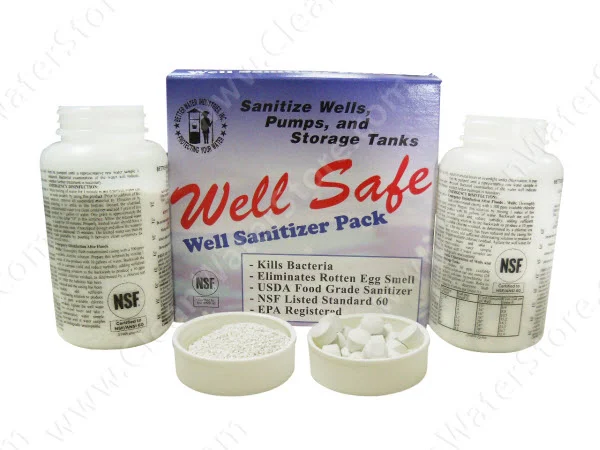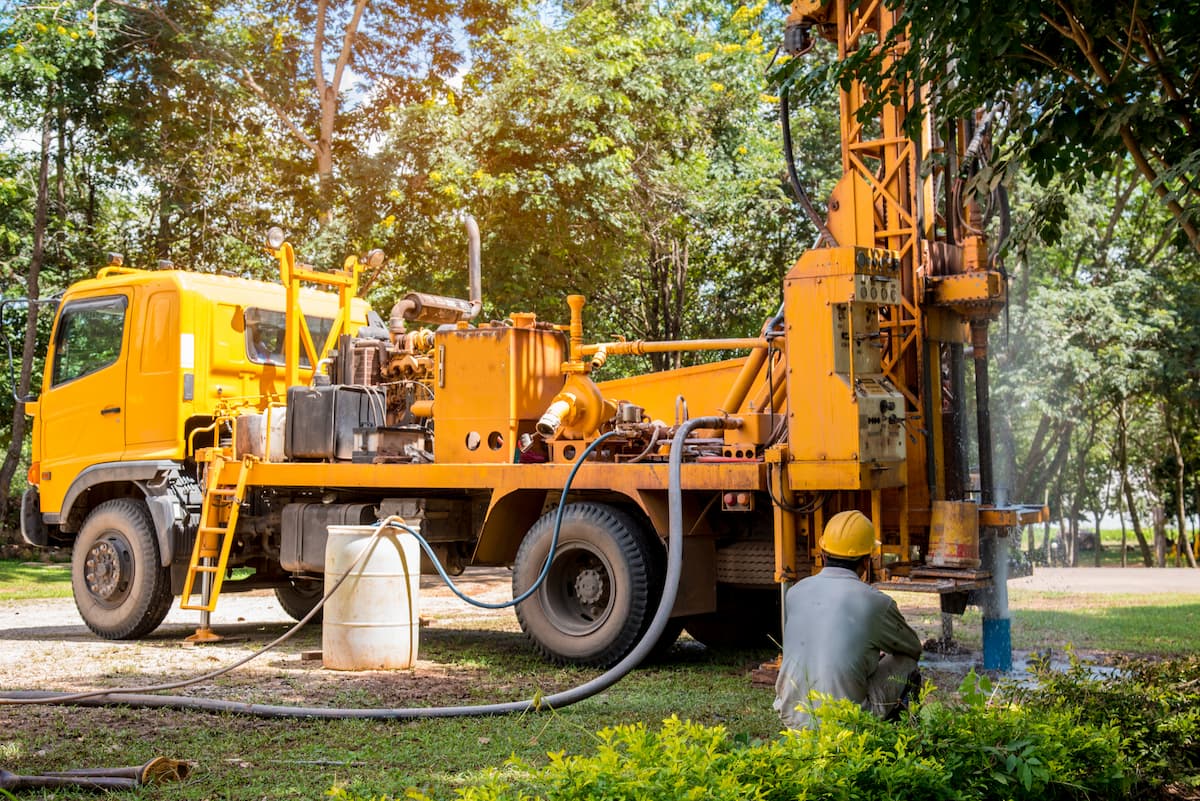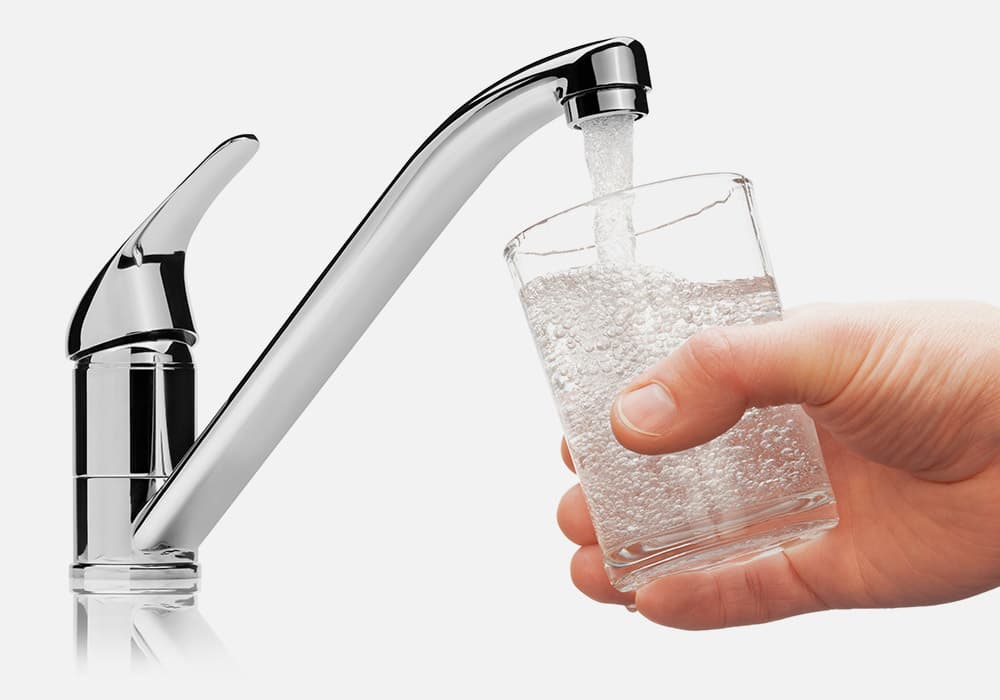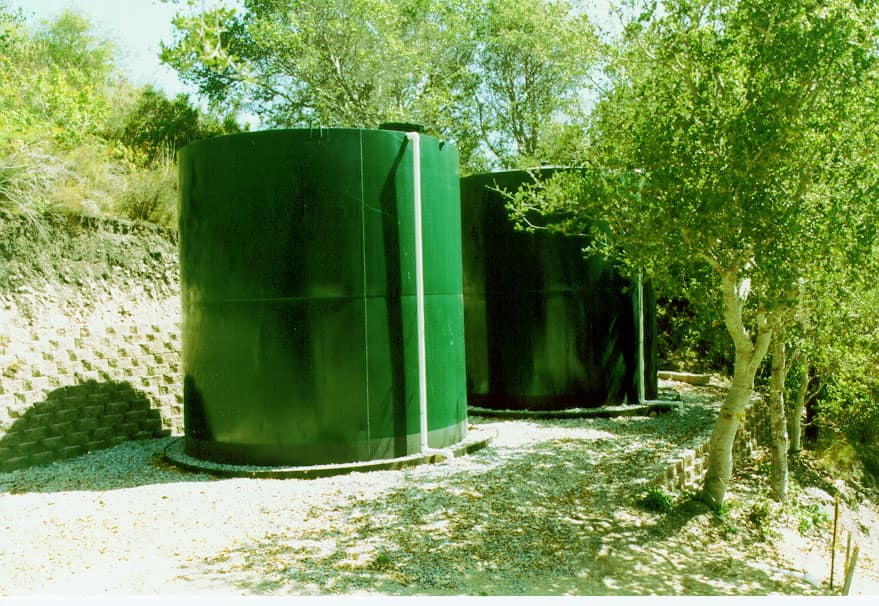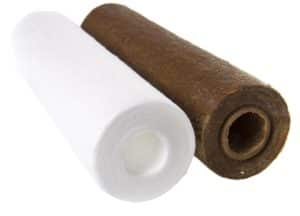Eliminate Well Water Odors: Four Reasons Why Hydrogen Peroxide Water Treatment Is Best

If you’ve noticed an unpleasant rotten-eggs odor from your well water, you might think chlorine is the solution. But before you go down this route, take a moment to consider hydrogen peroxide water treatment as an alternative.
Water containing hydrogen sulfide gas (“H2S”) has a unique “rotten egg” odor, which is often present in both hot and cold but may become more pronounced from the hot water. This kind of water can discolor coffee, tea, and other beverages and alter the appearance and taste of cooked food.
Hydrogen peroxide is an environmentally friendly and cost-effective way to eliminate this odor in your well water.
Let’s explore the four main reasons hydrogen peroxide is better than chlorine and how it works.
- Hydrogen peroxide systems are often better than chlorine at eliminating rotten-egg odor in well water, as it works faster than chlorine.
- When injected into water, hydrogen peroxide releases a large amount of dissolved oxygen which has a strong oxidizing effect, destroying odors and oxidizing iron and other contaminants.
- Hydrogen peroxide does not add chemical by-products into your water, only oxygen and water.
- Water treated with peroxide can be filtered with activated catalytic carbon, which lasts much longer than when carbon used for removing chlorine.
By releasing oxygen atoms into the environment, hydrogen peroxide reacts to the hydrogen sulfide gas molecules, breaking them up into water and small amounts of sulfur dioxide.
Remember that hydrogen peroxide is a much safer method for eliminating hydrogen sulfide rotten-egg odors than a chemical cleaner since it does not contain harmful chemicals that could damage your family's health or the environment.
 What Is Hydrogen Peroxide Water Treatment?
What Is Hydrogen Peroxide Water Treatment?
Hydrogen peroxide (H2O2) is a naturally occurring chemical compound composed of two hydrogen atoms and two oxygen atoms that can be found in rainwater and some natural springs. It can also be produced synthetically and used for several purposes, including disinfecting surfaces and eliminating odors in well water.
Hydrogen peroxide water treatment injects peroxide in precise levels into the water pipes as the water flows from your well. Hydrogen peroxide systems can be installed at the wellhead or, if a proportional flow-sensor type peroxide system is used, on the incoming water pipes to your home.
After the peroxide is injected, the water flows through a catalytic carbon backwash filter system to remove any remaining peroxide residual along with sediment and oxidized particles.
 How Can I Turn On and Off My Peroxide Pump Automatically?
How Can I Turn On and Off My Peroxide Pump Automatically?
The injection pump needs to be installed so it turns on and off automatically each time the well pump turns on, or water is flowing.
1. Wire the peroxide pump to the same circuit as the well pump via the pressure switch.
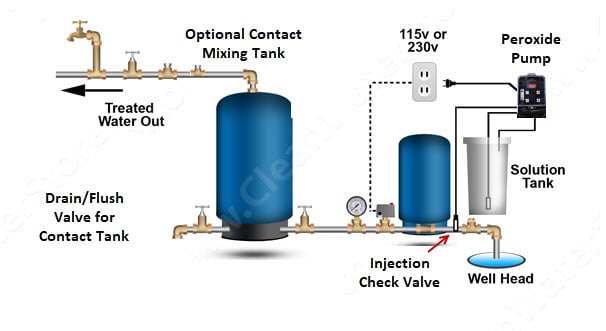
2. Wire to a flow switch.
The flow switch is plugged into a wall outlet. The peroxide injection pump is plugged into an outlet on the flow switch. When the water flows, the peroxide pump is turned on and off when water stops flowing.
3. Use a proportional feed-type pump.
This type of peroxide pump works in conjunction with a flow meter. It is wired, so the peroxide pump injects more or less peroxide based on the water flow.
This also makes it easy to install your peroxide system without requiring an electrician.
Properly maintained and managed allows precise control over the amount and concentration of hydrogen peroxide in the well water, ensuring maximum effectiveness against odor-causing sulfur bacteria and other microorganisms.
Install a Catalytic Activated Carbon After Peroxide Injection System

In addition to being economical and easy to use, one key advantage of these systems is their ability to reduce problems associated with chlorine-based treatments, such as corrosion, taste and smell issues, and potential health risks.
Best of all, no retention tank is typically needed when using hydrogen peroxide for odor removal; once the oxidized particles settle out of the water, they can be filtered out with a catalytic carbon backwashing filtration system.
The actual treatment procedure is simple. A metering pump automatically inserts a tiny amount of hydrogen peroxide in front of the pressure tank whenever the well pump turns on.
Use a Catalytic Carbon Filter After Peroxide Injection
The back-washing carbon filter system is installed after the pressure tank filters the water. The result is clean, disinfected, and odor-free water throughout the home.
Flow Sensor Systems Allow Peroxide Systems to Be Installed After Well
In some cases, it's not practical to install the peroxide injection point near the well, or perhaps you are on a shared community well and prefer to have the system right where the water enters the home.
In this case, a flow-based system can be used. This system uses a proportional flow meter to control the peroxide injection pump.
As soon as there is flow, the peroxide pump injects a small amount of hydrogen peroxide based on how fast the water flows through the pipe.
Proportionally fed hydrogen peroxide products offer owners a convenient way to inject hydrogen peroxide as the water enters the household plumbing system and are very easy to set up and maintain.
Can I Use My Water Softener with a Hydrogen Peroxide Well Water Treatment?
Yes. See this diagram. Install your water softener after the catalytic carbon backwash filter.
Why Is Hydrogen Peroxide Better than Chlorine?
Hydrogen peroxide works faster than chlorine at eliminating odors in well water since it doesn’t need to build up residual levels over time as chlorine does; instead, it immediately begins releasing dissolved oxygen into the water upon contact with it.
Additionally, unlike chlorine, hydrogen peroxide leaves behind no chemical by-products or residues after use; all that remains are clean-smelling and tasting natural minerals that help improve its quality.
There are many benefits to using hydrogen peroxide for eliminating odors in well water rather than relying on chlorine or other alternatives. Because it works quickly without leaving behind any unwanted chemical by-products or residues and does not require a retention tank for its effectiveness, hydrogen peroxide is an excellent option for homeowners looking for a cost-effective and eco-friendly way to make their drinking water more pleasant tasting and smelling.
When looking for a solution to get rid of foul odors in well water, hydrogen peroxide is the preferred choice over chlorine.
Hydrogen peroxide-based water treatment systems act quickly and effectively to resolve odor issues. On top of that, they don't leave behind any chemical by-products like chlorine does, making hydrogen peroxide a more eco-friendly option with no additional risks to safety and health.
While hydrogen peroxide might have a marginally higher cost than chlorine treatments, it’s worth investing in for its effectiveness and environmental friendliness.
Hydrogen peroxide is a popular remedy for odors and bad tastes sometimes found in water. When hydrogen peroxide is injected into the water, it quickly produces a substantial amount of dissolved oxygen—a process known as oxidation.
This oxygen has such powerful oxidizing capabilities that it destroys and eliminates hydrogen sulfide, odors, and even some microorganisms like iron bacteria that live in oxygen-starved environments.
Note that hydrogen peroxide is not recommended to disinfect the water of coliform or other pathogenic organisms. We still recommend chlorine injection for some well water if disinfection is needed or high levels of manganese are present.
 Why is Catalytic Activated Carbon Used After Peroxide Injection?
Why is Catalytic Activated Carbon Used After Peroxide Injection?
After peroxide injection, we recommend a backwashing self-cleaning activated carbon filter using a type of carbon called ‘activated catalytic carbon”. This type of carbon has a specially treated surface that acts as a super catalyst.
When water containing the peroxide comes into contact with the carbon, a catalytic reaction occurs, and much higher oxidation levels occur. Unlike regular carbon, which can get worn out or ‘used up' when used with chlorinated water, activated catalytic carbon lasts much longer when used with peroxide.
Our granular catalytic activated coconut shell carbon is manufactured from high grades of coconut shells. It was designed to reduce Chloramines, Hydrogen Sulfides, Hydrogen Peroxides, THMs, TCE, PCE, detergents, pesticides, Phenols, taste, and odor.
Catalytic carbon media is processed to enhance carbon’s natural ability to change contaminants chemically. A catalytic reaction occurs on the carbon's surface and increases the peroxide's ability to oxidize contaminants.
When hydrogen peroxide comes into contact with catalytic carbon media, the carbon acts as a catalyst to accelerate the decomposition of the hydrogen peroxide into water and oxygen gas.
This is because activated carbon has a large surface area, allowing it to come into contact with more hydrogen peroxide molecules. Additionally, our activated catalytic carbon pores are the perfect size for decomposing hydrogen peroxide molecules.
Can Hydrogen Peroxide Kill Sulfur Bacteria or Iron Bacteria?
Hydrogen peroxide is an excellent option for eliminating odors and some microorganisms from well water, including hydrogen sulfide. (Note it is not recommended for disinfection for coliform bacteria)
It also has the added benefit of being a strong oxidizer, making it an effective choice for tackling sulfur bacteria. Hydrogen peroxide can control and eliminate iron bacteria in water systems.
When hydrogen peroxide is injected into a water system, the oxygen produced by its decomposition provides enough oxidation potential to reach areas where iron bacteria flourish. This oxidation reaction kills the bacterial colonies and their effects on the water’s quality and taste.
However, hydrogen peroxide is not a one-size-fits-all solution for every situation. The effectiveness of hydrogen peroxide depends heavily on the concentration of it injected into the system and on how long it remains in contact with the bacteria colonies before dissipating. While iron bacteria can be prevented from creating more colonies and slime with peroxide injection, peroxide won't kill coliform or other harmful bacteria.
Typically, higher concentrations are more effective at killing iron bacteria compared to lower ones; if too low of a concentration is used, then hydrogen peroxide may only be able to reduce bacterial colonies instead of eliminating them.
Furthermore, hydrogen peroxide molecules are relatively short-lived, so multiple doses may be necessary throughout treatment to eradicate all bacterial activity from a water supply.
In addition to varying concentrations and contact time, other factors can affect hydrogen peroxides’ efficacy when battling iron bacteria, such as pH levels and temperatures in the treated water system.
These variables should be considered when formulating an effective treatment plan using hydrogen peroxide against iron bacteria colonies to achieve lasting results without risking any additional health or environmental risks.
Note that peroxide does not kill coliform bacteria and cannot be relied on to produce disinfected water. We recommend the pipes be sanitized with chlorine bleach once or twice a year. If the untreated water has coliform bacteria, we recommend an ultraviolet sterilizer and bacteria filter be used as the final stage before the water enters the home.
How Does Hydrogen Peroxide Work?
When added to well water, hydrogen peroxide releases dissolved oxygen into the water, which helps destroy rotten-egg smell caused by sulfur bacteria as well as other microorganisms that may be present. In addition, it converts any hydrogen sulfide gas or iron present into solid particles that settle out of the water and are then removed with a filter.
Hydrogen peroxide is typically injected into well water using a hydrogen peroxide injection system, a special equipment designed to disperse hydrogen peroxide into the water slowly. This process is commonly done with a diaphragm injector pump.
An injector pump is a small diaphragm pump that dispenses hydrogen peroxide directly into the water line at a precise rate and concentration. The hydrogen peroxide is mixed into the incoming water flow, then distributed throughout the building’s plumbing system.
Typically, hydrogen peroxide injection pumps are installed outside near the wellhead so that they can be easily accessed and maintained.
What Are the Main Benefits of Hydrogen Peroxide Treatment?
Hydrogen peroxide systems are often better than chlorine at eliminating rotten-egg odor in well water, as it works faster than chlorine.
When injected into water, hydrogen peroxide releases a large amount of dissolved oxygen which has a strong oxidizing effect, destroying odors and oxidizing iron and other contaminants.
Hydrogen peroxide does not add chemical by-products into your water, only oxygen and water.
Water treated with peroxide can be filtered with activated catalytic carbon, which lasts much longer than carbon used for removing chlorine.
When chlorine is used to disinfect water, in some cases, it may produce harmful byproducts such as chloroform and dioxins. These byproducts can be harmful to human health and the environment. On the other hand, hydrogen peroxide does not produce any harmful byproducts.
Hydrogen peroxide breaks down into harmless water and oxygen. When hydrogen peroxide decomposes, it breaks down into water and oxygen. This makes it safe for the environment and human consumption.
Hydrogen peroxide has many benefits over traditional chlorine treatment, including being a stronger oxidizer, not producing harmful byproducts, and breaking down into harmless water and oxygen.
Questions? Email our technical support team at [email protected] or chat or call us anytime!
Related links:
Hydrogen Peroxide for Well Water Treatment: How to Eliminate Odors with Peroxide
How to tell where the rotten-egg odor is coming from
Learn more about private wells on the EPA website.

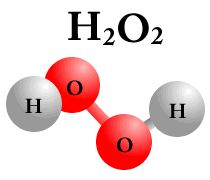 What Is Hydrogen Peroxide Water Treatment?
What Is Hydrogen Peroxide Water Treatment?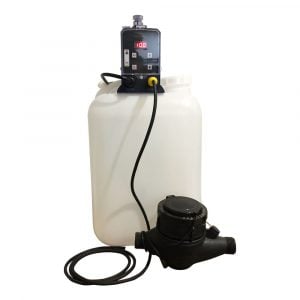 How Can I Turn On and Off My Peroxide Pump Automatically?
How Can I Turn On and Off My Peroxide Pump Automatically?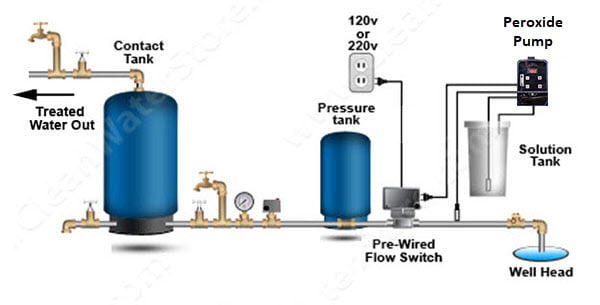
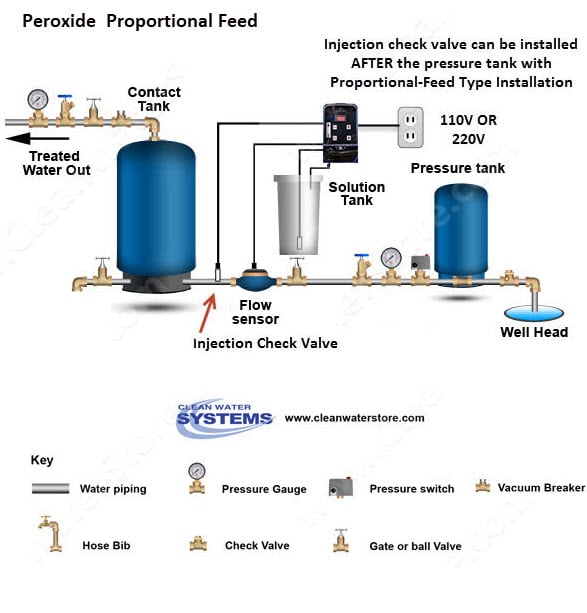
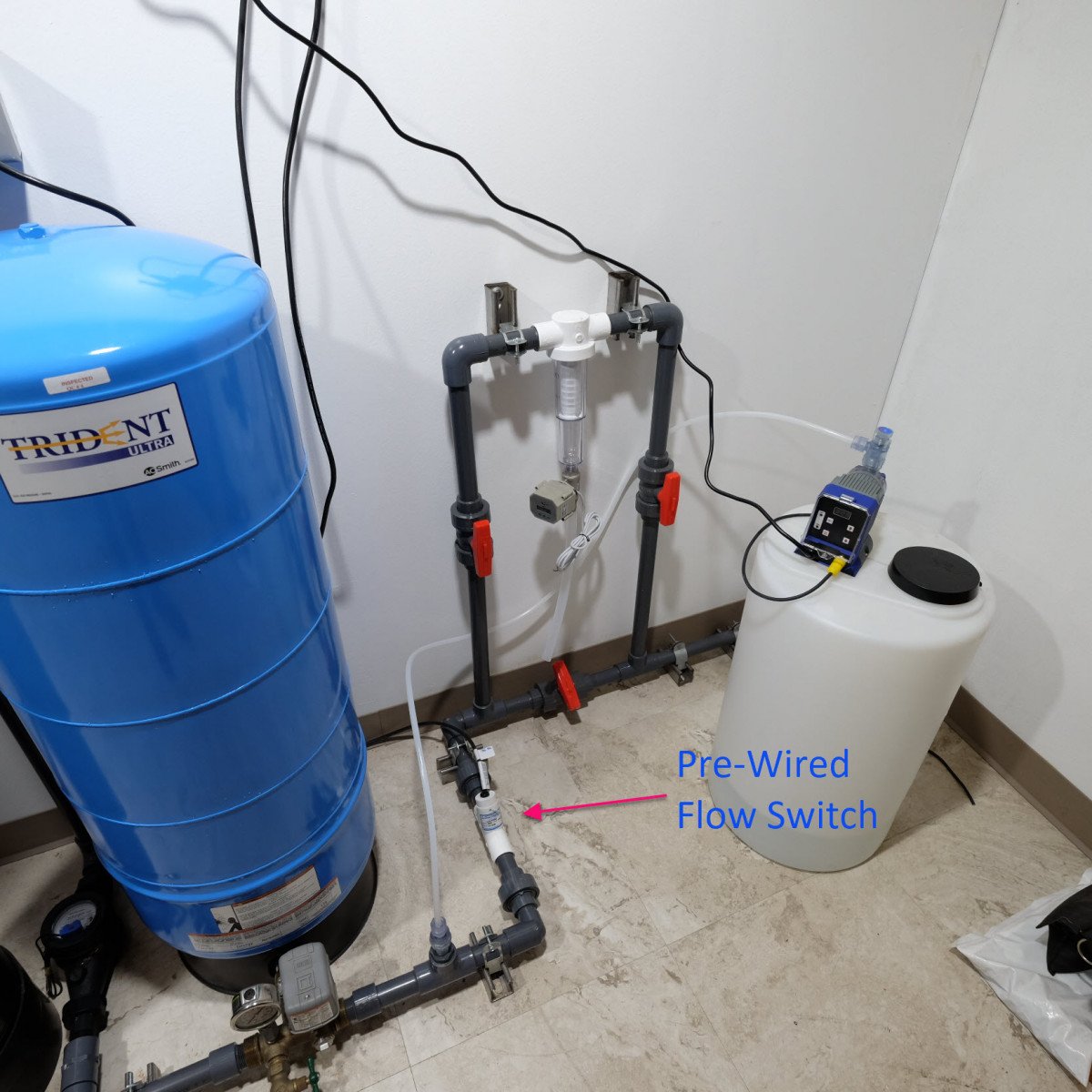
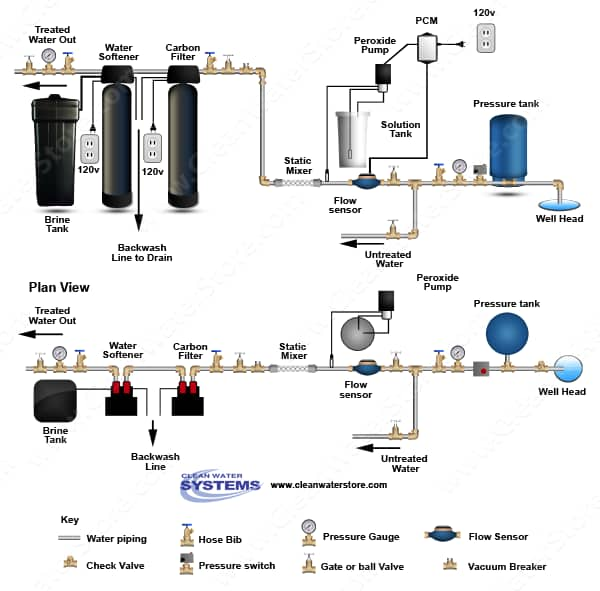
 Why is Catalytic Activated Carbon Used After Peroxide Injection?
Why is Catalytic Activated Carbon Used After Peroxide Injection?

